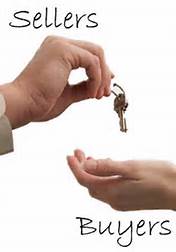Yesterday we talked about how to sell a product by showing enthusiasm or love for the product or services you are selling. Today, we continue the second part of how to sell a product, by connecting with your buyer. If you do not establish a relationship with your buyer or customer, you might not be able to sell your products/services or even close a deal. Continue reading.

- Anticipate your customers’ motivations.
You want to be able to answer any questions that customers may have about a product, but even more importantly, you want to anticipate those questions. This shows that you understand customer needs. Make sure that you are able to connect emotionally with customers by addressing those needs.
- Practice breaking the ice with customers.
If you are working in direct sales, the way you connect with people is critical. Instead of asking the close-ended question “May I help you?,” ask the more positive, open-ended questions like “Are you looking for something for yourself? Or a gift for someone special?” In addition, be ready to make remarks about your product that will interest customers and start deeper conversations. For instance, if you are in clothing retail, you might say: “You know, ugly Christmas sweater parties are really popular right now. Have you ever been to one?”
- Convert the customer’s motivations into the product’s characteristics.
In marketing, this is known as “positioning,” and it consists of equating the product with the customer’s hopes and desires. A number of factors are important when positioning a product:
- Position the product in the best spectrum of the market possible. Don’t pitch the product too high or too low in terms of affordability and luxury.
Position the facts about the product according to the person you’re selling it to. You may have a handful of different facts, but it’s up to your skill to know which of those facts best serve each individual sale.
Don’t fudge facts or lie outright. Product positioning is about perception, not deception.
Position the facts so that they transcend the product itself. This means that the desirable, positive values associated with the product are what sell it. Companies that excel at this include Coca-Cola, Apple, and many designer goods or labels. Think about how your product will connect with a customer’s lifestyle or values, and not simply serve a function.
For instance, if you are trying to sell a relatively high-end minivan to a wealthy older person, you might mention its luxurious features. Do this by saying things like: “Take a look at that wood trim—it’s just beautiful. And those soft leather seats—they’re so comfortable. They’re perfect for taking a nice sunset drive.”
If you were trying to sell the same minivan to a family with three children, however, you would emphasize its more utilitarian features. For example, you could say things like: “The third seat adds lots of room for carting friends around. It also folds down when you need room for hauling groceries, sporting gear, and things like that. And did I mention that side air bags and anti-lock brakes come standard?”

- Be honest about your product.
Long-term lovers of your product will only come about if you’ve been honest with them. This means being transparent in your delivery of product information and also admitting your own lack of knowledge or mistakes you’ve made. Don’t be afraid of honesty; it builds trust.
- If you ever are not able to answer customers’ questions or supply them with what they need, offer to follow up with them later, as soon as you are able to.
Make sure customers know they can come back to you later if they have questions or concerns.
If it ever turns out that a product isn’t right for a customer, be honest about it and help the customer find what he or she really needs. Even if you don’t make the sale today, your honesty and generosity will be remembered, and can translate into future sales.
For instance, if you are trying to sell a sports car to customer who eventually tells you that he has five young children who he drives to school everyday, you could say something like: “Well maybe you’d be better off with a good minivan or SUV. But if you’re ever in the market for a second vehicle, come back and talk to me and I’ll help you get a good deal.”
- Close the sale.
There are many styles and methods of closing a sale, but one of the most effective has the mnemonic, ABC: “Always Be Closing.” As you confirm your prospective buyer’s interest in the product, put forward trial closes like, “Does this sound like the product you want?” or “So what do you think? Will this meet your needs?”
- Give customers time to consider.
Appearing overly pushy is a turn-off for many buyers. They may want to go home and do a quick online search for more information. Let them do so with your enthusiastic and supportive pitch in mind. If you’ve been truthful, helpful, considerate, and enthusiastic, and the information you’ve given them matches with what they read online, they are likely to come back to your product.
- Sometimes, it pays to let your customers take the lead. Give them time to consider, and keep quiet while they do. Only offer more information when they request it.
Don’t let customers get away without knowing how to contact you. If you are working in a store or on site, make sure customers will know how to find you again (especially if you will be moving around). Make sure to tell customers something like “I’ll be right here at the counter if you need me,” or “Just ask any sales associate to page me if you have any questions.”
You can also give customers your contact information so they can get in touch with you if they have questions or want more information. Slip the customer your business card or other contact information and say something: “Call me anytime if you have questions, and you can also find me right here in the store on weekdays.”
Use your instincts. If you think a customer is close to buying, stay nearby without being intrusive. You’ll want the customer to be able to find you quickly. The last thing you want is for a potential buyer to decide to purchase and then be unable to find you.






